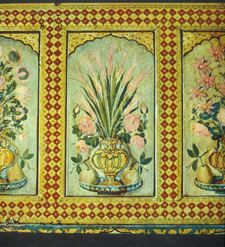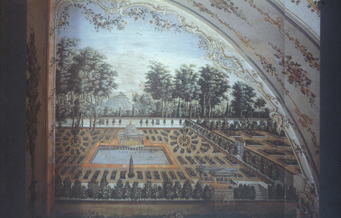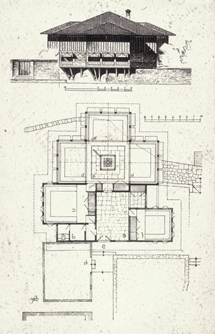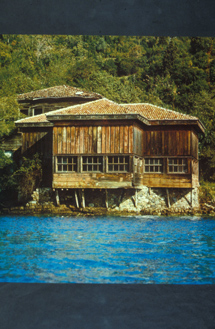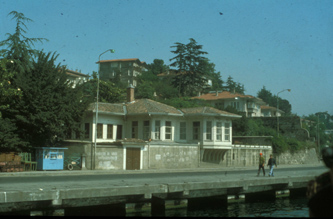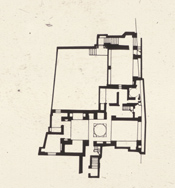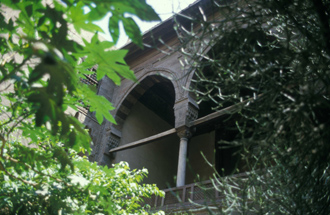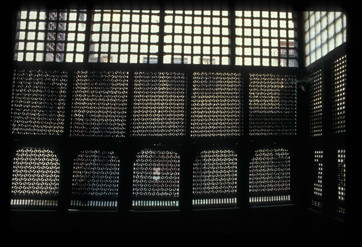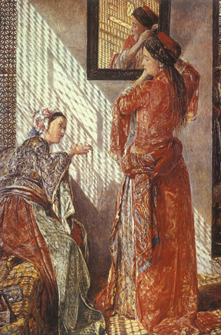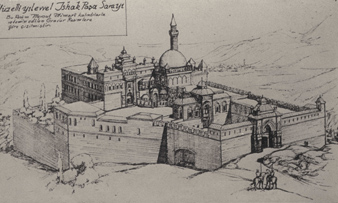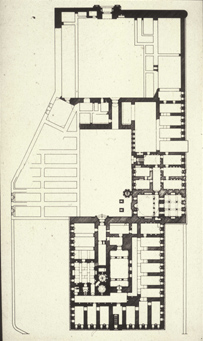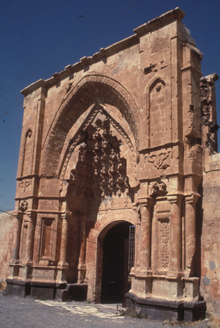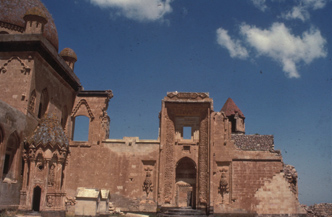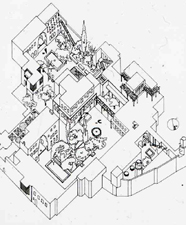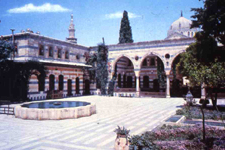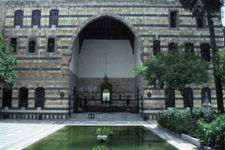AGA KHAN PROGRAM FOR ISLAMIC ARCHITECTURE
Course 4.611/4.613:
16- Baroque Ottoman Residences: (Click on images to enlarge)
The Tulip Period:
The name given to the period of Ahmet III (1703-30), which announced the end of the Classical period and ushered the Baroque.
Decoration of the fruit room of Sultan Ahmed III at the Topkapi Palace |
The Turkish Baroque Style:
The name given to the Ottoman architectural production from the mid-18th century until the third quarter of the 19th century. It originated in the wake of the gradual Westernization of the Ottoman lifestyle and is characterized by a profusion of curved, undulating motifs, imported European patterns, and unrestrained, extroverted plans.
A representation of a garden in the Mihrishah apartment at the Topkapi palace showing the baroque influence on architecture and landscape |
Ottoman Yalis of Istanbul:
The Hüseyin Köprülü Pasha (Amcazade) Yali on the Bosphoros (1698): Built by a Grand Vizir as a retreat house on the Bosphoros, this yali was distinguished by the separation between its haramlik and its selamlik. The rooms are arranged around the sofa, and a T-Shaped pavilion overlooks the sea.
Plan of the Hüseyin Köprülü Pasha Yali |
Exterior view from water of the Hüseyin Köprülü Pasha Yali |
The Serifler Yali at Emirgan on the Bosphorus (1725-28): Follows the same principle as the Köprülü's Yali, but its selamlik's layout is more articulated.
Exterior view of the Serifler Yali at Emirgan |
The Zahabi House, Cairo: (started 1634) The house of the head of the Merchants' Guild is built in the commercial center of the city. Its selamlik consists of a maq‘ad and a qa‘a, its haramlik is organized around another qa‘a. Unlike earlier Mamluk houses, the focus of this house, which is a characteristic Ottoman house, is the courtyard.
Zahabi house; first floor plan |
Zahabi house maq'ad |
View of the mashrabiyya of the second floor qa'a |
John Frederick Louis 19th century representation of women sitting behind the mashrabiyya |
Ishak Pasha Saray, Dogubayezit, Turkey: (ca. 1784): The seat of the government in the province of Mount Ararat in Eastern Anatolia. Built by the semi independent pasha, Ishak, and his son, the complex is an intentional Seljuk revival example with many Turkish Baroque elements. Situated on a long spur overlooking the Ararat plateau, the saray is divided in the traditional Ottoman manner into three sections: the first is service court; the second is the selamlik court; and the third is the haramlik court. The splendid decorative program is an eighteenth century interpretation of the twelfth-thirteenth centuries Seljuk precedents, and is all achieved in stone carving.
Reconstructed aerial perspective of the Ishak Pasha Saray |
First floor plan |
Main portal of the Saray |
Harem, exterior portal of the Ishak Pasha Saray |
The Azem Palace, Damascus, Syria: (1749) A large complex built by Ass'ad Pasha al-Azem, the governor of Damascus, in a Syrian layout that emphasizes the importance of the open iwan as the main reception space. The palace is organized in the Ottoman fashion around three courtyards: the service court, the haramlik, and the selamlik. Water and trees play a major role in the articulation of its courtyards. Its decoration is mainly Damascene, and the ablaq arrangement is dominant.
An axonometric of the Azem palace showing its arrangement around three courtyards |
The main courtyard of the Azem palace with a fountain in the center |
The main external gate of the palace showing the ablaq stone courses |
Architectural Terms:
- Yali: A loan word from the Greek specifically used to designate the pavilions on the shores of the Bosphorus outside Istanbul.
- Selamlik: The reception area in the Ottoman house.
- Haramlik: The family or harim area in the Ottoman house.
- Liwan or Iwan: A ubiquitous element in palaces and rich houses, it is the focal point of the structure, functioning as a reception space open by an arch onto the courtyard.
- Mashrabiyya: The turned-wood lattice in geometric designs, which screens windows.
- Malqaf: An equivalent of Badhahanj (wind-catcher) which was used in Cairo.
- Maq‘ad: An open loggia with several arches that overlooks the courtyard and is raised by several steps. It was the men sitting place and is the Cairene equivalent of an iwan.
